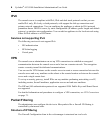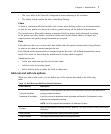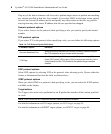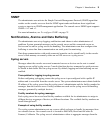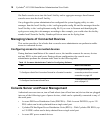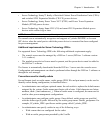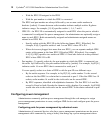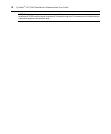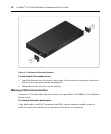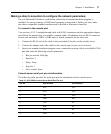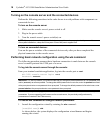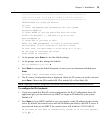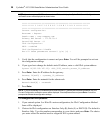
For IPMI power management, the default hotkey is Ctrl+Shift+I. For IPDU power management,
the default hotkey is Ctrl+p.
Options for managing power
Authorized users can perform power management through the console server by using forms in
the web manager, from a power management screen while logged into a device or from the
command line while logged into the console server.
An authorized user with administrative privileges can perform IPDU and IPMI power
management. A regular user with permissions to the connected devices can perform IPDU
power management.
Power management through the web manager
Users with power management permissions can perform power management through the web
manager. The web manager menu includes two power management options, both discussed in
Chapter 6.
Power management from the console server command line interface (CLI)
Console server administrators can use the ipmitool command to manage power on IPMI devices
while logged into the console server with administrative rights. The ipmitool command is
documented in the Cyclades ACS 5000 Command Reference Guide.
Hostname Discovery
An administrator can configure hostname discovery on the console server. When hostname
discovery is enabled for a serial port, the console server attempts to discover the hostname of
the server connected to the port. If the hostname of a server is successfully discovered, the
hostname of the device connected to it is shown as the serial port alias.
If the server is later moved to another port, and the new port is also configured for hostname
discovery, the hostname for the server is again discovered at the new serial port.
NOTE: If the consoleserver isbeingmanagedthrough DSView3 software, hostnamediscoverycanbe configured
through the DSView 3 software.
An administrator can also configure site-specific probe and answer strings. These strings are
used to probe the target device that is connected to the selected serial port and extract the
hostname from the answer that is received in response to the probe string. The result of each
probe string is matched against all answer strings. If no match is found, the next probe string is
sent until there are no more probe strings or a match occurs. The default strings have a broad
range and work in most cases.
Chapter 1: Introduction 13




